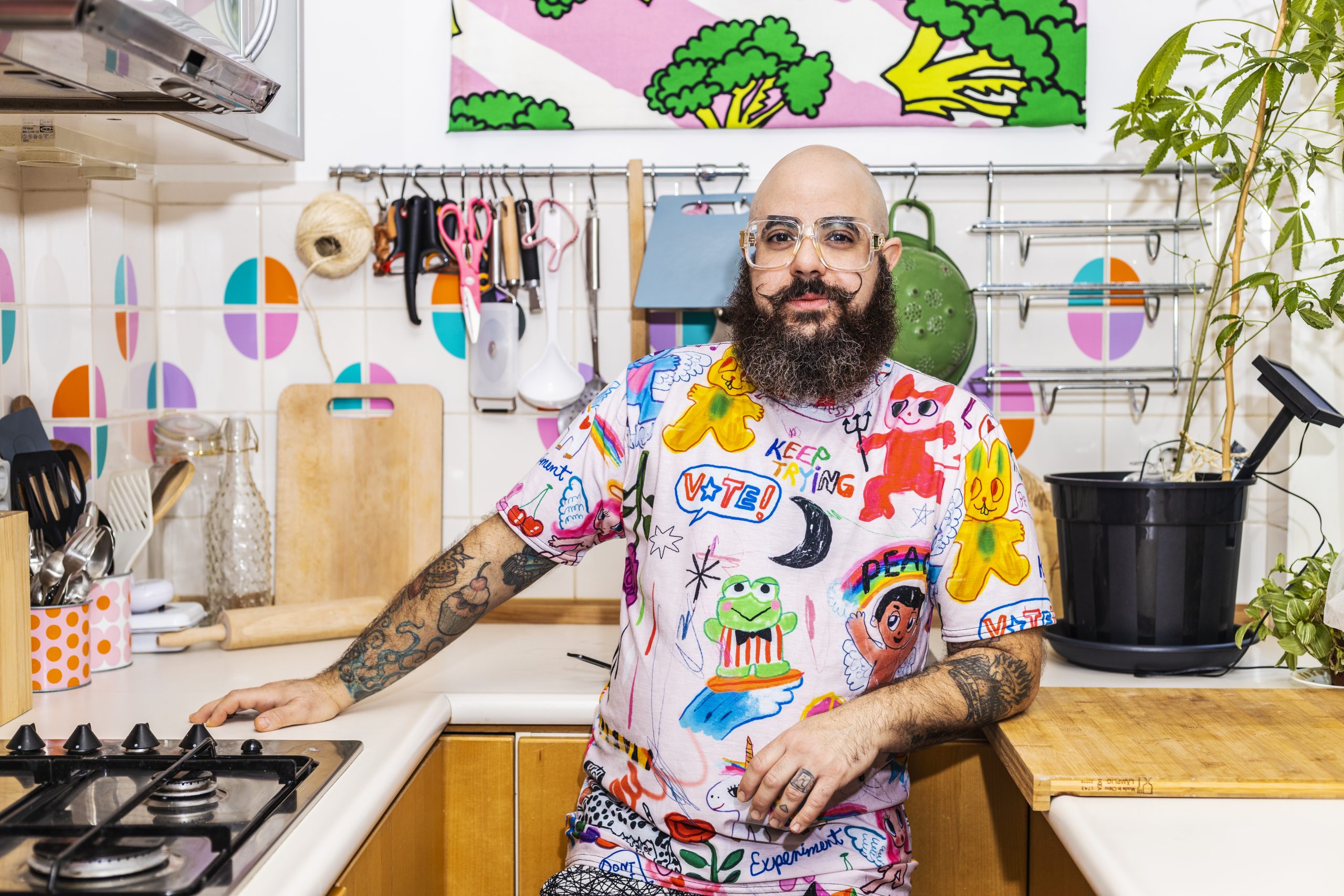‘Growing up in Brooklyn, I was a popular kid. When we played house, the other children let me be the father or the hot guy next door who had a beard and drove a motorcycle. I would hang out with the boys and I excelled in sports. I refused to wear dresses, and instead I wore pantsuits. Dressed this way, I felt that my outside matched my inside. At my bat mitzvah, which is, ironically, all about celebrating your womanhood, I wore my dad’s yarmulke and his prayer shawl at the synagogue.
When I hit puberty, my body started to do things I didn’t want it to do. At Jewish Summer Camp I had my first period, and it was terrible: I kept bleeding and felt like ripping my uterus out. Then my breasts became huge, and my former bros started calling me titty woman. I tried to hide my body by hunching over and wearing oversized clothes. I realised I was attracted to both men and women, but I did not tell anyone. Some kids at school were out, but the difficulties they experienced scared me off.

Image: Elvin Boer
Everything changed when I went to college and took classes in lesbian literature. I started reading all these amazing books by queer feminist writers, like Minnie Bruce Pratt and Leslie Feinberg, and I learned about our heritage. At the bars, I mostly befriended elderly butch lesbians. Although these women – who unapologetically wore “men’s clothes” and behaved “masculine” – had been the ones who got beaten up and kicked out of many places, they had never given up the fight to be who they wanted to be. It was their generation that paved the way for me to present myself the way I wanted to. I learned that masculinity is not the exclusive domain of men; feminine masculinity is about being authentic and owning your own body.
‘With my breasts gone and my beard fully grown, I finally have the body I feel comfortable in’
At queer bars in Manhattan, I performed as a drag king under the name Donatella Lesbiana – a mafia guy from Brooklyn who had a thick accent and a little moustache. Even though Donatella was a cartoon version of myself, I felt like myself when I performed on stage in front of my community. It was incredibly empowering. Being a butch woman meant having an identity, an image, and a way of carrying myself that felt much closer to who I was. It was one step further towards my masculine self.
Although butch femininity and being a dyke were sacred to me, I never felt like a woman. My feminine body just did not feel right, and I began to feel more and more alienated from it. I realised that to survive in this life, I would have to make a profound change. At weekly talking groups for trans people, I shared my feelings and listened to the stories of others. It felt like a homecoming. I realised I was trans and it did not take long for me to go into transition: I took testosterone and had top surgery. Now, with my breasts gone and my beard fully grown, I finally have the body I feel comfortable in.

Image: Elvin Boer
Having a male body does not mean I identify as a man. Masculinity is too toxic for me, and the male-female dichotomy too heteronormative. I am a trans person who identifies with certain male images and roles, which mostly derive from gay subcultures in New York and San Francisco in the 1970s, such as leather daddies and bears. Butch people with lots of hair, whose genders and sexualities are presented playfully and who exist in all their myriad forms. However, I will forever identify as a lesbian. I have lived my life as a dyke for so long and those aesthetics shaped the person I am today. Some people might think this is confusing, but the only one who decides my identity is me.
‘I might have a beard and facial hair, and I am hairy and all that, but I fight every day not to be seen as a man’
I am aware that because of my masculine looks, I pass for a cis white man. I can blend in pretty much unseen and unnoticed. But I am not interested in blending in. Because if you do, you disappear. People need to know there are other ways of existing in the world. And that you do not have to be stuck in the category society puts you in. I might have a beard and facial hair, and I am hairy and all that, but I fight every day not to be seen as a man.
As a hair stylist, I am a certified member of the Dress Code Project. People of all genders, especially trans people, come to me to get their hair done in a safe environment. I am often the first person to cut people’s hair after their transition. It is a very intimate exchange because you touch their faces while sharing very personal stories. Hair is a way to express emotions; especially for minority groups, hair is such a powerful marker of identity. I am so happy and privileged to encourage people to gaze into the mirror while getting them closer to what they love.’

Image: Elvin Boer
